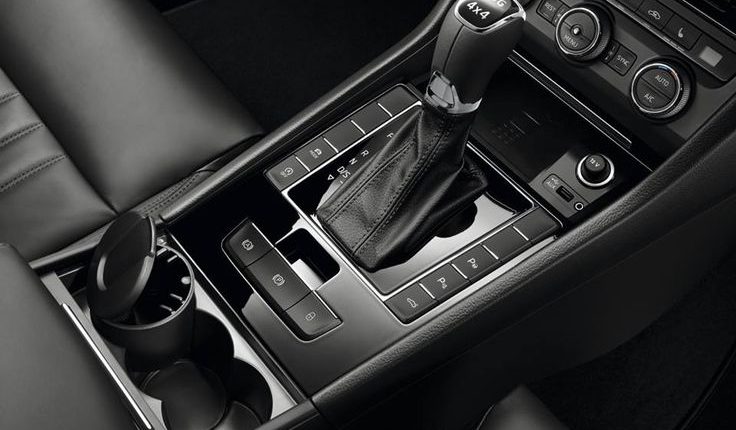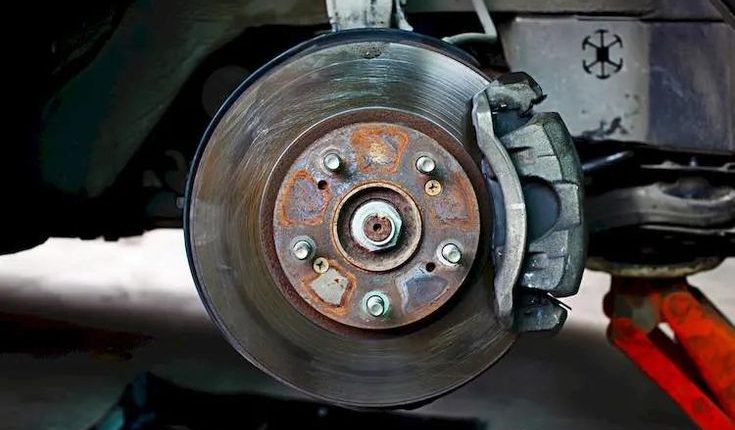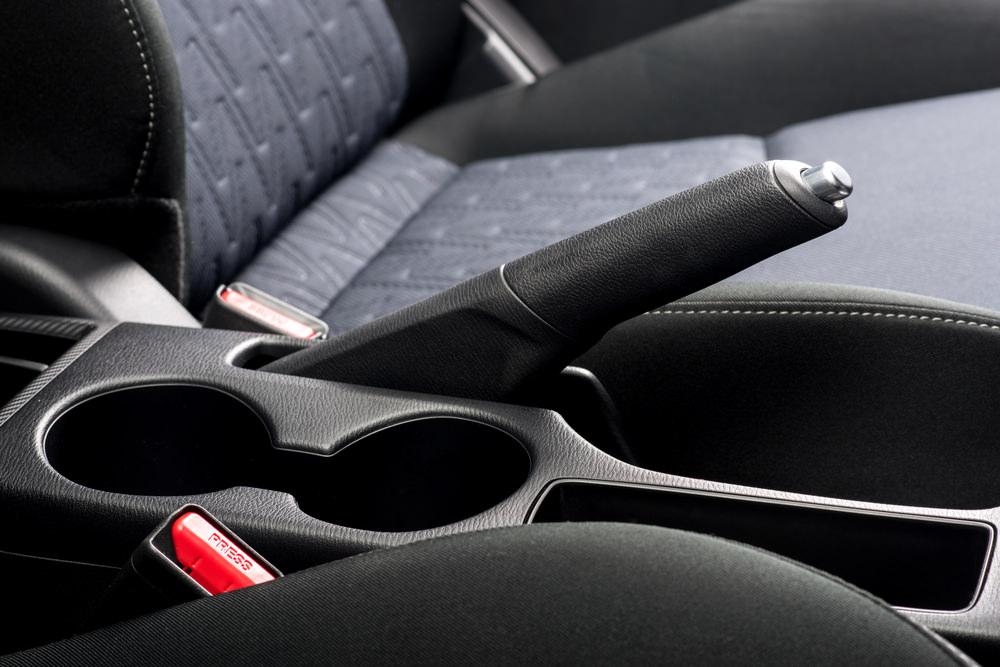A parking brake is also known as an emergency brake (e-brake) or hand brake. Unlike the foot brake, which is only used when you are driving. The parking brake works when the car is at a stop. The main purpose is to keep the car stationary so that it does not drift away when you are stopping or parking. So how many times does it happen that you start driving the car only to realize that it appears to be dragging? It happens due to driving with parking brake on and it is an easy mistake to make. People often forget to disengage it when they are absentminded or driving a vehicle they are not used to.
Can you use the emergency brake while driving? Let’s get the answer along with why you need to put on the brake, the symptoms that occur when you accidentally keep driving with the brake on, and the consequences.
Contents
Why Do You Need To Put The Parking Brake On?

The parking brake system is designed independently of the foot brake system, sometimes it can also be used as an auxiliary for the foot brake when it fails. However, the parking brake is designed only to brake the wheels when stopping, so its deceleration is very poor. If the driver uses the handbrake to stop suddenly, it is extremely dangerous.
Applying the parking brake is necessary when you park the car on a slanted road or steep incline. Normally, leaving the vehicle in gear after switching off the engine is enough to keep its standstill. But, it can move if the shifter does not function for some reason and allows the gears to let loose.
In addition to being used when parking, the handbrake also has several important uses when driving on the road:
When waiting at a traffic light
In case of stopping at a red light for more than 10 seconds on a flat road, the driver can shift to N and pull the parking brake. This operation helps the driver to rest for a moment, highly effective for those who have to drive continuously for many hours. The other benefit is: While you are waiting at the traffic light or intersection if you are hit from behind, your foot will slip off the brake. It may cause unnecessary accidents. However, in this case, the handbrake will help you mitigate this consequence by absorbing a lot of the force of a low-speed hit.
In emergency situations
In special cases, the handbrake is the last method when unfortunately the main brake fails. However, it should be noted that you should only be used during force majeure. Because if you suddenly pull the parking brake while the car is driving, what happens next is very difficult to control. Braking force only on the rear wheels will cause wheel slippage, causing the vehicle to rotate.
When using a manual transmission
If your car is going uphill, put in front gear and turn the wheel to the left. So the car will roll to the curb. If you are going downhill, reverse and turn your wheels toward the curb. None of this guarantees that your car won’t slide downhill, especially if the runway or if your clutch is worn out, but these tips greatly reduce the chances.
Does Driving With Parking Brake On Damage the Brake?
Driving forgetting to release the handbrake is not a single driver’s fault, especially for new drivers. The parking brake is still active while the vehicle is running and the distinctive feature is the burning smell due to the brake pads being heated and worn. It can damage the brake. The failure rate depends on factors such as the car speed, how long it takes to release, and whether your vehicle is a front- or rear-wheel drive. Normally, in this case, some cars often give a signal through a warning light that comes on on the central dashboard to remind the driver. If drivers still do not pay attention to the light, after driving your car, you will feel the weight of the vehicle.
If driving with the brake on, it will create friction between the brake disc and the brake pad. The faster you drive, the more heat you generate. Normally, the heat generated will cause the surface of pads to harden and can reduce friction, making it difficult for you to stop the vehicle when applying the brake.
>> Related post: Is Putting the Parking Brake On Always a Good Idea?
What Happens If You Drive With The Parking Brake On?
When you forget to disengage the parking brake before taking off, it can’t cause any permanent damage if you have driven for a short distance or at a low speed. But, if you drive for too long at high speeds, say one or two hours at 80 miles, it will cause some serious havoc. No matter if you use the electric handbrake or the cable brake if you’re driving with parking brake on, you’ll run into the same problems:

Destruction of the rotors and pads
Driving with the parking brake fully engaged for an extended period. Many parts can wear out prematurely due to the immense friction and heat the braking system generates. The faster you drive, the quicker these parts will get damaged.
It may lead to wheel-bearing damage along with toasting the rear binders. Be ready to repair or change the shock absorber, caliper, axle seal, and a few other components. Additionally, the engine undergoes a high amount of strain.
Overheated brake fluid
The heat from the friction can get into the brake fluid and can bring it to a boiling point given that you are driving at high speeds for a long time. Although, boiling brake fluid is a rare incident. The most common effect is a glaze on the brake pads, which makes them slippery. As a result, the braking system has to work harder to stop the vehicle.
If you don’t repeat the mistake, the glaze will disappear over a period of time and allow the braking system to work normally.
>> Read more: The Facts about Changing the Brake Fluid
Damaged brakes
It depends on the extent of applying the parking brake. If it is lightly applied, the brakes won’t suffer much despite you driving the car around. But, driving the vehicle after applying the parking brake may cause the braking system sizeable damage.
Knowing more about the consequences of driving with parking brake:
What Measures To Take To Prevent The Damage
You don’t need to worry if you drive a front-wheel car. The vehicle is unlikely to move with the parking brake on, and even if it does. You will immediately know because of the dragging of the tires.
The new models of cars and trucks have an indicator light that comes on if the driver starts driving with the parking brake on. Some latest models come with an electric parking brake. Such a braking system disengages on its own when the vehicle starts moving, preventing any type of damage from happening.
The old models of rear-wheel-drive vehicles can be a problem though. The engine does not need to put much effort into overturning the brake. In addition, the vehicle will also run so smoothly that you won’t notice the problem until there is huge damage or failure of several components. The only solution, in this case, is to be careful and check whether the parking brake is on before kicking off the engine.
Some Other Notes When Using The Parking Brake.
As analyzed above, you can see the effects of driving with parking brake on. Here are some tips for you when using the e-brake:
- Remember to release the handbrake before driving the car.
- Regularly check and maintain the parking brake system to avoid brake jams due to dry oil or rust. The periodic maintenance of the brake helps to remove the dust on the surface, detect errors in the brake system. And avoid the risk of brake pads getting stuck, the brake not sticking, and causing unsafe use.
- When detecting the brake is not working properly, check the brakes, otherwise, change the brake pads (for vehicles with drum brakes).
- Pull the parking brake properly: The habit of not pulling the parking brake when stopping or parking is not only the cause of the quick failure of the handbrake but also the main cause of car accidents. Besides, many drivers when driving automatic transmission cars have the habit of going to P. Turning off the engine and then pulling the car’s handbrake. According to experts, this habit can affect transmission in the long run. Safety instructions of automakers when parking with an automatic transmission vehicle are to step on the foot brake – pull the handbrake – on P – turn off the engine.
Nutshell
Your small negligence sometimes causes big consequences. Therefore, you should make it a habit every time you park your car to pull the parking brake. When the vehicle is moving, check to see if you have released the handbrake. Hopefully, with our recent sharing on the topic “Does Driving With Parking Brake On Damage the Brake?” you have gained more knowledge about how to use the handbrake effectively so as not to affect the use of the car. We wish you a safe driver.




Thanks for the advice
Greetings,
I have a question and need your assistance. I recently changed gear box for my toyota vitz 1kr engine. Since then when am driving, the vehicle dis-accelarates itself. If i drive on a steep road downward and i dont press neither the fuel or brake pedal, the car brakes itself for some seconds then releases. It doen not have the smooth movement a vehicle should have in a steep area without pressing any peddle. Kindly assist..what might be the problem.
Thank you
Benjamin
Always insightful
Pls repeat the article on how to clean the inside of headlamps especially the plastic type